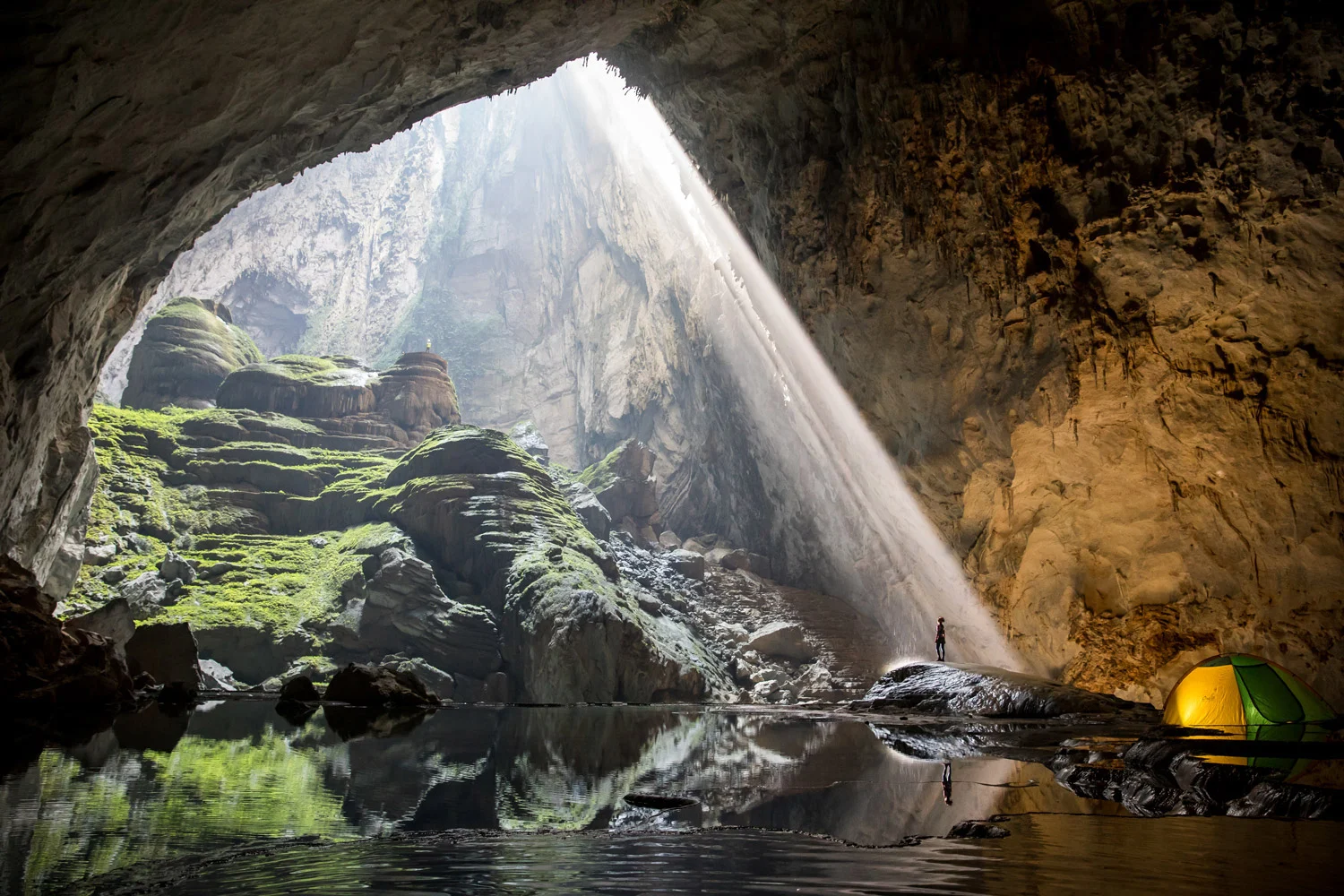Phong Nha National Park
Phong Nha – The magnificent Kingdom of Caves in Vietnam
Phong Nha-Ke Bang (Phong Nha-Kẻ Bàng) is a national park in the center of Quang Binh province in north-central Vietnam. It protects one of the world’s two largest karst regions with several hundred caves and grottoes. Its name derives from Phong Nha cave, the most beautiful one, with numerous fascinating rock formations, and Ke Bang forest. The plateau is probably one of the finest and most distinctive examples of a complex karst landform in Southeast Asia.
The significant geomorphic features of its karst landscape and cave system gave the UNESCO reason to add Phong Nha – Ke Bang National Park to the World Heritage List in 2003 under criterion viii, arguing that it is a site of very great importance for increasing our understanding of the geologic, geomorphic and geo-chronological history of the region. Phong Nha – Ke Bang National Park includes one of the world’s most impressive cave and grotto systems, with more than 100km of explored caves and grottos (as of 2012). Son Doong Cave was found the biggest cave in the world in 2010.
Phong Nha – Ke Bang National Park is one of the most spectacular wilderness sites in South East Asia and one of the 2 largest limestone regions in the world. Destined to become one of viet nam’s major tourist attractions, a vast network of underground caves and passages can be found, along with awesome jungle scenery and fascinating rock formations.
The Phong Nha – Ke Bang National Park region is considered the largest standard sample of limestone ecosystems in Viet Nam. With 10 major vegetation types, scientists recorded more than 2,851 species of vascular plants, including 419 that are endemic to Viet Nam, and 755 species of vertebrates in 2012. Some 69 plant species were considered globally threatened and 127 animals, including 39 mammals, are unfortunately already listed as threatened in the International Union for Conservation of Nature (IUCN) Red List and the Viet Nam Red Data Book.
Phong Nha – Ke Bang National Park is also home to a variety of primates such as monkeys, apes and langurs. The region features 43% of total primates in Viet Nam and has the largest population of Hatinh langurs in the world – one of the endemic species in Indochina. The park has also a wide variety of orchids, including those that were considered extinct before they were found here. Since its recognition as a NP in 2001, scientists – in cooperation with the Cologne Zoo in Germany and the Phong Nha – Ke Bang National Park – have found several new reptilian and amphibian species in the region.
The Phong Nha – Ke Bang National Park region consists of karst formations that have evolved since the Palaeozoic age some 400 million years ago. On the surface, there is a striking series of landscapes, ranging from deeply dissected ranges and plateaux to an immense ‘polje’ – a large elliptical depression typical for karst regions. Many of these mountains are more than 1,000m high and underlying holes are sometimes several hundred meters deep. The limestone karst contains 17 major explored caves and some 300 smaller caves and grottoes, many of them with stalactites and stalagmites. The variety of forms is immense: dry caves, terraced caves, suspended caves, dendritic caves, intersecting caves, giant speleothems and unusual forms such as sub-aerial stromatolites.
In 2009, the potentially largest cave in the world, Son Doong, was discovered by the local farmer Ho Khanh, measuring around 7km in length, 150m in height (250m at some points) and 200m in width over most of its length.
The caves play an important role for the cultural heritage of the region. The oldest evidence of human occupation of the area is the Neolithic axe heads and similar artifacts found in some of the caves. There are some relics of the Ham Nghi King, the final King of the Nguyen Dynasty before the French colonial period, found on Maria Mountain in the North of the park. The Phong Nha Cave has long been a site of religious and touristic importance, with an old Cham Temple discovered in the cave which was a site for worship in the 9th and 10th century.
Wild and exciting… but at the same time, the experience of this captivating scenic beauty leaves you with a sense of tranquility.





